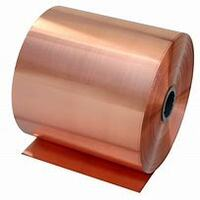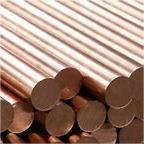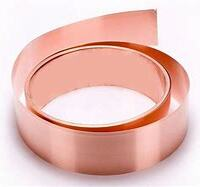1. Introduction
In the past 48 hours, global copper prices have surged due to increased demand in renewable energy infrastructure and electric vehicle manufacturing, according to Metal Bulletin (April 26, 2024). This spike has renewed interest in copper recycling—especially stripping copper wire for scrap—as individuals and small businesses seek cost-effective ways to capitalize on rising copper values. If you’ve got old cables, motors, or wiring lying around, knowing how to properly strip copper wire can turn waste into cash.

Stripping copper wire isn’t just about profit—it’s also about safety and environmental responsibility. Burning insulation, a once-common shortcut, releases toxic fumes and is now illegal in many areas. This guide shows you the best way to strip copper wire safely, legally, and efficiently, whether you’re dealing with thin household wiring or thick industrial cables.
2. Why Strip Copper Wire?
Clean, bare copper fetches significantly higher prices at scrap yards than insulated wire. Stripped copper can sell for up to 3x more per pound. Plus, recyclers prefer clean metal because it’s easier to process. Beyond economics, proper stripping supports sustainable practices by keeping hazardous materials out of landfills and reducing the need for new copper mining.
You might also encounter other copper forms during your projects—like copper strip, copper rod, or copper bonded ground rods—but this guide focuses specifically on wire stripping, which is one of the most accessible entry points into copper recycling.
3. Tools You’ll Need
- Manual wire strippers (for small-gauge wires)
- Automatic or benchtop wire strippers (for high-volume work)
- Utility knife or razor blade (use with caution)
- Heat gun (optional, for stubborn insulation)
- Safety gloves and eye protection
Avoid using open flames. Burning copper wire for scrap is dangerous, illegal in many regions, and contaminates the copper with carbon residue, lowering its value.

4. Step-by-Step: Best Way to Strip Copper Wire
4.1. Sort Your Wire First
Separate copper wire by type: THHN, Romex, coaxial, motor windings, etc. Also distinguish between solid and stranded copper. Sorting helps you choose the right stripping method and maximizes your payout at the scrap yard.
4.2. Use Manual Strippers for Small Jobs
For household wiring (e.g., 14–12 AWG), use adjustable manual strippers. Set the gauge, clamp the tool, and pull—the insulation should slide off cleanly without nicking the copper. This is the best way to strip copper cable when volume is low.
4.3. Try a Benchtop Stripper for Bulk Work
If you’re stripping wire for scrap regularly, invest in an automatic wire stripper. These machines can handle hundreds of feet per hour and work on multiple gauges. They’re ideal for stripping long copper wire from appliances, HVAC units, or construction sites.

4.4. Handle Thick or Armored Cables Carefully
For thick copper wire (e.g., from transformers or industrial equipment), score the insulation lightly with a utility knife, then peel it back. Never cut deeply—you risk damaging the copper strands inside. For armored cables, remove the outer sheath first before accessing inner conductors.
5. Common Mistakes to Avoid
Don’t burn insulation off—this violates EPA guidelines and ruins copper purity. Also, avoid mixing copper with other metals like aluminum; scrap yards penalize contamination. And never strip live wires—always confirm circuits are de-energized.
Another frequent error is confusing copper-clad materials with pure copper. Copper clad steel ground rods or copper bonded earthing rods look like copper but contain steel cores. These have much lower scrap value. Stick to verified bare or insulated copper wire.
6. What to Do With Other Copper Products
While stripping wire, you might come across related items like copper strip, copper round bar, or copper tubing. Flat copper strips (e.g., 1mm copper strip or beryllium copper strip) are often used in electrical bus bars or grounding systems. If you find copper earth strip 25x3mm, check if it’s pure copper or copper-clad—this affects resale value.
Similarly, copper rod for welding or copper brazing rod shouldn’t be mixed with scrap wire unless confirmed as pure copper. Copper to copper welding rods and copper to copper brazing rods are specialty alloys and may not be accepted at standard scrap yards.
For plumbing-related copper, like 15mm copper pipe or aircon copper tube, these are usually pure copper and highly valuable. Clean them of fittings and solder before selling.
7. Where to Sell Stripped Copper
Search for ‘copper strip near me’ or ‘scrap copper buyers’ to find local recyclers. Call ahead to confirm accepted types—some only want bare bright copper, while others take #1 or #2 copper. Prices fluctuate daily, so check current copper rod price or copper strip price trends before selling.
Remember: documentation may be required. Many states mandate ID and purchase records to combat metal theft.
8. Conclusion
Stripping copper wire for scrap is a smart, eco-friendly way to earn extra income—especially with copper prices on the rise. By using the right tools and techniques, you can maximize your returns while staying safe and legal. Skip the shortcuts like burning, sort your materials carefully, and always verify purity. Whether you’re working with thin copper strips or thick power cables, clean, bare copper is king in the recycling world.
Our Website founded on October 17, 2012, is a high-tech enterprise committed to the research and development, production, processing, sales and technical services of ceramic relative materials such as How. Our products includes but not limited to Boron Carbide Ceramic Products, Boron Nitride Ceramic Products, Silicon Carbide Ceramic Products, Silicon Nitride Ceramic Products, Zirconium Dioxide Ceramic Products, etc. If you are interested, please feel free to contact us.

